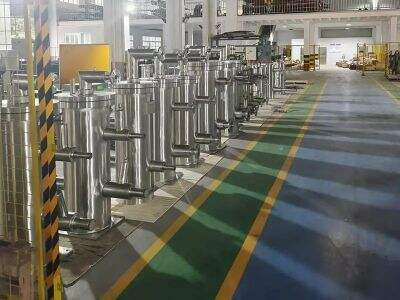If you are designing a new industrial pipe system, you need to make sure not to overlook some common design no no’s which could cause costly and error prone systems. They can improve their process through optimized productivity and prevented mistakes. Whether you are just starting to design a new project's pipe system or it is already up and running, there are common pitfalls that should be avoided during the industrial piping specification process, costly errors should be not be overlooked and key aspects of a successful pipe system will make clear in our eBook on pipe system design.
Top Errors to Avoid When Choosing Industrial Pipe Systems
A mistake made often during the design stage of Pipe System is a misjudgment, or lack of analysis, in what the line requires. This may result in the use of incorrect materials, sizes and configurations, which have inefficiencies and/or safety concerns associated therewith. Moreover, it can also to lead problems down the road if you don’t take into consideration factors like pressure ratings, temperature needs, and corrosion resistance. With little knowledge of what the system will ask for, it can be easy to make wrong decisions that may affect performance and operations over the life of a well.
Another major mistake one should avoid is using old or incorrect information to Pressure Vessel systems. Advances in both technology and materials dictate it’s necessary to be up-to-date on the latest trends and best practices in the industry. Failure to do so can lead to the incorporation of inferior materials or old-fashioned processes, which could affect system efficiency and long-term performance.
Eliminate Expensive Mistakes on Your Pipework Design
Costly mistakes in industrial pipework specifications can be avoided by investing time and resources into careful planning and research. Undercutting the specification process or rushing it will result in missing details and potential costly errors later down the line. Performing a full system requirements and environment analysis and/or performance expectation calculation can assist in making an educated decision which reduces risk of failure.
Consider also the cost implication of not meeting with specialists or those in industry when discussing industrial pipe systems. A Expansion joint professionals can also offer a fresh perspective and recommendations that aren't obvious to someone who doesn't specialize in such matters. By consulting with professionals, businesses can save time and prevent some mistakes when designing their pipe systems to be tailored specifically for them.
Optimize System Design by Eliminating 10 Most Common Piping Mistakes
One of the best tools for designing a new industrial pipe system is to maximize efficiency by not making typical design errors. This consists of the proper arrangement, materials, and assembly sequence. For instance, selecting suitable material for the desired use and sizing up the right pipe dimension and pattern as well as correct support system play a vital role in maximizing energy benefits.
Another mistake to swerve is not having proper maintenance/inspection processes. Regular checks and maintenance are an essential part of this; even the best systems can corrode in time, resulting in leaks, failures and a need for expensive repairs. Through the adoption of a preventative maintenance strategy and regular checking, organisations can help to extend the life of their pipes and avoid surprise downtime or failures.
The particular industrial pipe systems you invest in can either help or hinder your overall performance
In order to enjoy the best features, you need to take into account important factors while industrial pipe systems. This involves thinking about what your system is going to do, where it’s going to be used, how it’s going to work, what conditions or environment it will operate in and what kind of regulations the final device will need to pass. Considering design and performance as a package, business can construct pipe systems that are customised to suit the individual needs and goals Businesses who consider design and performance together as a package enable them to build tailored-made pipe systems.
In this context, placing safety and risk into the design process is critical to realize optimal performance. Once businesses have identified potential dangers and developed procedures for safety, they can mitigate risks to a safe working environment. Attention to safety when designing and specifying industrial pipe systems is a critical factor in safeguarding people and property.
These Core Factors For Industrial Pipe Systems
There are many components to consider when designing an industrial pipe system. These often involve having to decide what the system is supposed to do and how it will be perform, which materials/components should be used, environmental/regulatory concerns as well as emphasis on safety/reliability. By refocusing on these important aspects of system design early in the specification process, companies have the opportunity to design pipe systems that are efficient, long-lasting and suited to their needs.
when designing a new industrial pipe system, it's critical to steer clear of common pitfalls, make time and room for planning and research,, seek advice from industry experts,,, add efficiency through smart design,, guarantee performance by accounting for certain factors. By adhering to these tips, and with the right expert for example Hongyuan guiding them through the process, companies can ensure that they will have tough and quality pipe systems in place to help efficiency l operations while creating ongoing success.
Table of Contents
- Top Errors to Avoid When Choosing Industrial Pipe Systems
- Eliminate Expensive Mistakes on Your Pipework Design
- Optimize System Design by Eliminating 10 Most Common Piping Mistakes
- The particular industrial pipe systems you invest in can either help or hinder your overall performance
- These Core Factors For Industrial Pipe Systems

